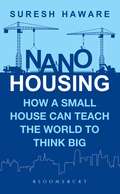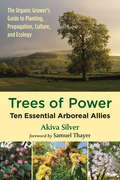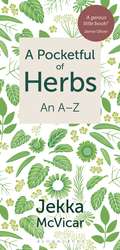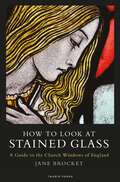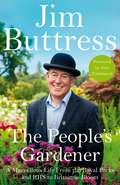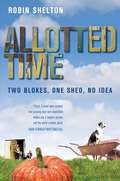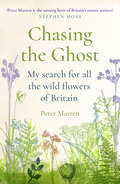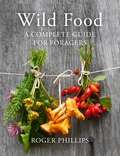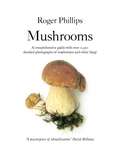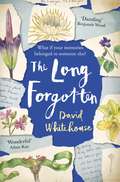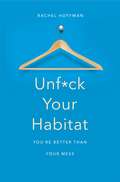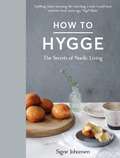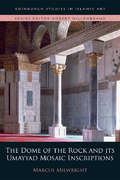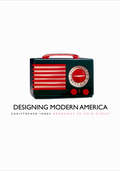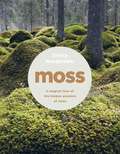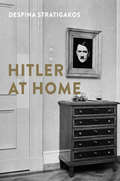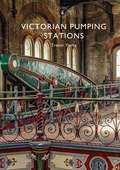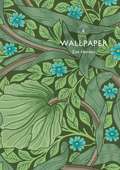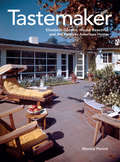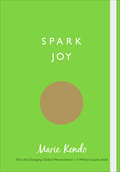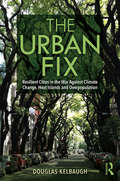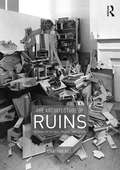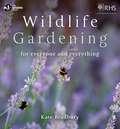- Table View
- List View
Nano Housing: How a Small House Can Teach the World to Think BIG
by Suresh HawareThink big, act small… Act now… Many of us think big but fail to micro plan. Others get stuck at micro-planning, missing the 'big picture' of what impacts us nationally and globally. Housing is a basic necessity of human beings across the globe, and not just in India. Affordable housing for the masses is a key challenge for governments and policy makers. In Nano Housing, Dr Suresh Haware brings out a detailed study and offers solutions for the housing needs of India and its states and cities. A path-breaking and time-tested concept, nano housing is the outcome of an in-depth practical research which has the potential to fulfill the dream of the common man-an affordable house at an affordable price. Further, the book addresses the impact of GST, RERA and demonetisation on real estate; analyses REIT, home finance and rental housing; and voices the concern of homeless people, unauthorised housing, redevelopment and many other aspects of housing. An innovative and revolutionary idea, Nano Housing is a must-read for all businessmen in general and professionals, economists, sociologists, officials and policy makers engaged in the housing industry in particular.
Trees of Power: Ten Essential Arboreal Allies
by Akiva SilverThe organic grower's guide to planting, propagation, culture, and ecology Trees are our allies in healing the world. Partnering with trees allows us to build soil, enhance biodiversity, increase wildlife populations, grow food and medicine, and pull carbon out of the atmosphere, sequestering it in the soil. Trees of Power explains how we can work with these arboreal allies, specifically focusing on propagation, planting, and individual species. Author Akiva Silver is an enthusiastic tree grower with years of experience running his own commercial nursery. In this book he clearly explains the most important concepts necessary for success with perennial woody plants. It’s broken down into two parts: the first covering concepts and horticultural skills and the second with in-depth information on individual species. You’ll learn different ways to propagate trees: by seed, grafting, layering, or with cuttings. These time-honored techniques make it easy for anyone to increase their stock of trees, simply and inexpensively. Ten chapters focus on the specific ecology, culture, and uses of different trees, ones that are common to North America and in other temperate parts of the world: Chestnut: The Bread Tree Apples: The Magnetic Center Poplar: The Homemaker Ash: Maker of Wood Mulberry: The Giving Tree Elderberry: The Caretaker Hickory: Pillars of Life Hazelnut: The Provider Black Locust: The Restoration Tree Beech: The Root Runner Trees of Power fills an urgent need for up-to-date information on some of our most important tree species, those that have multiple benefits for humans, animals, and nature. It also provides inspiration for new generations of tree stewards and caretakers who will not only benefit themselves, but leave a lasting legacy for future generations. Trees of Power is for everyone who wants to connect with trees. It is for the survivalist, the gardener, the homesteader, the forager, the permaculturist, the environmentalist, the parent, the schoolteacher, the farmer, and anyone who feels a deep kinship with these magnificent beings.
A Pocketful of Herbs: An A-Z
by Jekka McVicarFrom rosemary to wild garlic, and hyssop to sea kale, our food would be poorer without the herbs we grow. Jekka McVicar is the expert on herbs and how to get the best from them, and this new pocket book is the go-to guide for chefs and gardeners across the country. In a compact and handy A-Z format, this guide will ensure you get the best out of your herb garden, providing details such as when and where to plant, how hardy each plant is, how to nurture and care for your herbs and what each herb is best used for in the kitchen. Jekka's own photography of the herbs complements the text, providing a quick and colourful reference.
How to Look at Stained Glass: A Guide to the Church Windows of England
by Jane BrocketThe magical qualities of stained glass have an enduring appeal, but church windows tend to be ignored as a form of creative and artistic expression. How to Look at Stained Glass is a fresh, unstuffy guide, which explores the medium by themes, patterns, designs, and effects. Using an A-Z format to reveal a multitude of fascinating details - all the way from apples to zig-zags - it makes looking at gloriously colourful, artistically important windows entertaining and rewarding. This layman's guide requires no previous historical, artistic or religious knowledge and the A-Z miscellany is in keeping with the pot-luck mix of windows to be found in most churches. It covers all the major periods and styles from medieval to modern, Victorian to post-war, eighteenth century to Arts and Crafts, figurative to abstract, and examines the fascinating and evolving iconography of stained glass. Illustrated in black & white and colour and with a list of the top 30 places to see outstanding examples, How to Look at Stained Glass is all that is needed to make sense of and enjoy the array of stained glass windows in the churches of England.
The People's Gardener
by Jim ButtressWith an introduction by Alan Titchmarsh, The People's Gardener is an inspiring memoir by top gardening judge Jim Buttress, that will amuse and enthral gardeners everywhere.As a judge at the RHS, Jim Buttress presides over the country's favourite flower shows, including Chelsea and Hampton Court. He also judged the Britain in Bloom competition for over twenty-five years, and was watched by millions on the BBC's The Big Allotment Challenge. But how did this practical gardener from Purley go on to have one of the most impressive careers in British horticulture?In this warm and funny memoir, Jim takes us from his boyhood obsession with Percy Thrower to his ten-year stint as Superintendent of the Central Royal Parks. Here, his day-to-day duties could include anything from having a drink and a chat with the Queen Mother to working out how to water some elephants who'd taken up residence in Hyde Park.Jim also reveals what it's like to exhibit, and to win gold, at the Chelsea Flower Show, and shares his many adventures as a judge; from the joy of awarding medals to grateful winners to the shock of being threatened with a punch on the nose from the odd irate loser. Packed with brilliant characters, this book will delight everyone who shares Jim's love of gardening.
Allotted Time: Two Blokes, One Shed, No Idea
by Robin SheltonRobin Shelton and his mate Steve were complete neophytes when they decided that having an allotment might save them a bit of money. But what had seemed like a good idea over a couple of beers seemed rather more daunting when faced with a weedy patch of ground. Still, both men were at a crisis point in their lives and the allotment represented their desire to achieve something concrete. They persevered and, despite the weather and confusing advice from their elderly allotment neighbours, managed to plant and grow a successful crop of vegetables. As he writes about their year in the allotment, Robin describes his own personal journey. When he takes the allotment on he is divorced, broke and suffering from depression. Working on the allotment brings back happy memories of his father, who died when Robin was sixteen, and also draws him closer to his own two sons. Gradually Robin finds stability and a sense of purpose in his life. His and Steve's tale is funny, moving and enlightening - a book for anyone who's ever bitten off more than they can chew, but muddled through anyway. "Their struggle to plant their crops against the baffling advice of fellow allotment holders is funny and moving. Our heroes finish the year wiser, saner and with an impressive array of veg." Daily Express "A comforting antidote to the glossy perfection of gardening on the telly." Evening Standard
Chasing the Ghost: My Search for all the Wild Flowers of Britain
by Peter MarrenJoin renowned naturalist Peter Marren on an exciting quest to see every species of wild plant native to Britain. The mysterious Ghost Orchid blooms in near darkness among rotting leaves on the forest floor. It blends into the background to the point of invisibility, yet glows, pale and ghostly. The ultimate grail of flower hunters, it has been spotted only once in the past twenty-five years. Its few flowers have a deathly pallor and are said to smell of over-ripe bananas. Peter Marren has been a devoted flower finder all his life. While the Ghost Orchid offers the toughest challenge of any wild plant, there were fifty more British species Peter had yet to see, having ticked off the first 1,400 rummaging in hedges, slipping down gullies and peering in peat bogs. But he set himself the goal of finding the remaining fifty in a single summer. As it turned out, the wettest summer in years. This expert and emotional journey takes Peter the length and the breadth of the British Isles, from the dripping ancient woods of the New Forest to the storm-lashed cliffs of Sutherland. He paddles in lakes, clambers up cliffs in mist and rain, and walks several hundred miles, but does he manage to find them all? Partly about plants, partly autobiography, Chasing the Ghost is also a reminder that to engage with wild flowers, all we need to do is look around us and enjoy what we see. Praise for Rainbow Dust: ‘Beautifully written and thoroughly researched… a truly marvellous book’ Telegraph ‘A scholarly and captivating excursion into the history of natural history’ Independent
Wild Food: A Complete Guide for Foragers
by Roger Phillips'I can safely say that if I hadn't picked up this book some twenty years ago I wouldn't have eaten as well, or even lived as well, as I have. It inspired me then and it inspires me now' Hugh Fearnley-WhittingstalWild food is all around us, growing in our hedgerows and fields, along river banks and seashores, even on inhospitable moorland. In Roger Phillips and Martyn Rix's Wild Food, hundreds of these plants are clearly identified, with colour photography and a detailed description. This definitive guide also gives us fascinating information on how our ancestors would have used the plant as well as including over 100 more modern recipes for delicious food and drinks. From berries, herbs and mushrooms to wild vegetables, salad leaves, seaweed and even bark, this book will inspire you to start cooking with nature's free bounty.
Mushrooms: A comprehensive guide to mushroom identification (A\pan Original Ser.)
by Roger Phillips'Roger Phillips has written the best mushroom book I know.' Hugh Fearnley-WhittingstallThe culmination of over thirty years' work, Roger Phillips's authoritative and superbly illustrated reference work is packed with the most up-to-date information and original photographs. The essential illustrated mycological encyclopedia, this book is also clear, user friendly and will appeal to a wide range of readers. Unsurpassed in both illustrative and descriptive detail, Mushrooms contains over 1,250 photographs, often showing the specimens in various stages of growth, and includes all the latest botanical and common names as well as current ecological information on endangered species. Having sold more than 750,000 copies in Europe of his previous title on mushrooms, Roger Phillips's Mushrooms once again sets the benchmark. Quite simply, nobody with an interest in the subject can afford to be without this book.
The Long Forgotten
by David WhitehouseMemories make us who we are – but what if yours belonged to someone else?David Whitehouse's The Long Forgotten is the story of a missing plane, a rare-flower hunter, and a lonely young man who has begun to remember a past that isn’t his. It’s the story of a long-buried mystery, a quest that ended in tragedy, and a love that can never be forgotten.'This is a wonderful book, its different strands weaving around each other and coming together in the most fantastic conclusion. I am so jealous of David Whitehouse’s writing.' Adam Kay'Powerful, eccentric . . . Whitehouse's writing is energetic and pacey, spiked with startling moments of tenderness and superbly controlled' The Times
Unf*ck Your Habitat: You're Better Than Your Mess
by Rachel HoffmanFinally, here's a housekeeping and organizational system developed for those of us who'd describe our current living situation as a 'f*cking mess' that we 'really need to get around to fixing one day'.Rachel Hoffman began Unf*ck Your Habitat as a Tumblr blog aimed at a younger demographic, using daily, weekly, and mini challenges to motivate the lazy to get up and start cleaning. Now with nearly 30,000 followers, Rachel Hoffman has launched Unf*ck Your Habitat in book form, for anyone who has been left behind by traditional aspirational systems. The ones that so often ignore single people; people without kids; students; people with pets or roommates; those with full-time jobs; and people with mental illnesses, chronic illnesses, and physical limitations. Most organizational books are aimed at devoted homemakers, DIY-ers, and people who seem to have unimaginable amounts of free time. They assume we all iron our sheets, have linen napkins that match our table runners, and can keep plants alive for longer than a week.Basically, they ignore most of us living here in the real world.Interspersed with lists, challenges and other how-tos, this no-nonsense advice relies on UfYH's 20/10 system (20 minutes of cleaning followed by a 10-minute break; no marathon cleaning allowed) in order to help you develop lifelong habits. It's designed to encourage the reader to embrace a new lifestyle in manageable sections, so they can actually start applying the tactics as they progress. For everyone stuck between The Life-Changing Magic of Tidying Up and Adulting, this philosophy is decidedly more realistic than aspirational, but the goal is the same: not everyone will have a showcase of a home, but whatever your habitat, you deserve for it to bring you happiness, not stress.
How to Hygge: The Secrets of Nordic Living
by Signe Johansen'Uplifting, heart-warming, life-enriching. I wish I could have read this book years ago.' - Nigel SlaterNordic countries are consistently rated as the best places to live for quality of life, happiness and education, literacy and gender equality. But what's their secret? In How To Hygge, renowned Scandinavian cook and writer Signe Johansen explores the culture of hygge, shares the secrets of Nordic living and shows you how to adopt these elements into your everyday life, wherever you are in the world.Hygge is central to the Nordic sense of well-being. Roughly translated as 'cosiness', it implies warmth, conviviality and community. With fifty recipes and glorious imagery, Johansen explains how to enjoy the outdoors the Nordic way, the joy of fika (coming together over cake and coffee), how to collaborate to achieve a sense of community and why alcohol is integral to the healthy hedonism of hygge. For those who have long admired the region's stylish design heritage, she reveals how to achieve Scandi-Cool in your own home, without breaking the bank.Explore the culture of hygge, and learn how to live your life to the fullest, Nordic-style.
The Dome of the Rock and its Umayyad Mosaic Inscriptions (Edinburgh Studies in Islamic Art)
by Marcus MilwrightLocated on the Temple Mount in Jerusalem, the Dome of the Rock was constructed at the end of the seventh century by order of caliph ‘Abd al-Malik. This seminal structure has been much studied but no definitive interpretation yet exists of the meanings conveyed by the Dome at the time of its completion. The recovery of meaning is complicated by the paucity of primary written sources relating to the construction phases of the building and the motivations of its patron. This book concentrates on the most important surviving primary text, the long mosaic inscription running around the interior. Comprising a dedication and date (72/691-92) and material of a religious nature, the mosaic inscription provides vital evidence for the reconstruction of the meanings and functions of the Dome of the Rock. The detailed study of the mosaics helps to place them in the context of Late Antique monumental writing, particularly in Greek. The book makes use of contemporary Islamic coins, graffiti, and other inscribed objects in order to examine the Dome of the Rock in the relation to the ideological concerns of the Umayyad elite during and after the second Civil War.
Designing Modern America: Broadway to Main Street
by Professor Christopher InnesFrom the 1920s through the 1950s, two individuals, Joseph Urban and Norman Bel Geddes, did more, by far, to create the image of "America” and make it synonymous with modernity than any of their contemporaries. Urban and Bel Geddes were leading Broadway stage designers and directors who turned their prodigious talents to other projects, becoming mavericks first in industrial design and then in commercial design, fashion, architecture, and more. The two men gave shape to the most quintessential symbols of the modern American lifestyle, including movies, cars, department stores, and nightclubs, along with private homes, kitchens, stoves, fridges, magazines, and numerous household furnishings.Illustrated with more than 130 photographs of their influential designs, this book tells the engrossing story of Urban and Bel Geddes. Christopher Innes shows how these two men with a background in theater lent dramatic flair to everything they designed and how this theatricality gave the distinctive modernity they created such wide appeal. If the American lifestyle has been much imitated across the globe over the past fifty years, says Innes, it is due in large measure to the designs of Urban and Bel Geddes. Together they were responsible for creating what has been called the "Golden Age” of American culture.
Moss
by Ulrica NordströmExplore the magical world of moss, with this fully-illustrated and comprehensive guide. Moss is all around us. While it is most often associated with damp, shady spaces, it can be found in the most unexpected and far-flung places, from deserts to Antarctica. This book is a celebration of its quiet, unassuming beauty and a primer to understanding the secrets of the world's most ancient plant: · Discover the fascinating history of this soft and tactile plant · Learn how and where to identify and gather different moss species.· Take a tour of some of the most beautiful moss gardens in the UK, the US and Japan, where moss viewing has become a national phenomenon.· Learn how to cultivate moss, tie Japanese moss balls (kokedama) and plant moss landscapes in pots and terrariums.With stunning photography and botanical illustration, this is an utterly unique book that will be treasured by plant enthusiasts of all kinds.
Hitler at Home
by Despina StratigakosAdolf Hitler’s makeover from rabble-rouser to statesman coincided with a series of dramatic home renovations he undertook during the mid-1930s. This provocative book exposes the dictator’s preoccupation with his private persona, which was shaped by the aesthetic and ideological management of his domestic architecture. Hitler’s bachelor life stirred rumors, and the Nazi regime relied on the dictator’s three dwellings—the Old Chancellery in Berlin, his apartment in Munich, and the Berghof, his mountain home on the Obersalzberg—to foster the myth of the Führer as a morally upstanding and refined man. Author Despina Stratigakos also reveals the previously untold story of Hitler’s interior designer, Gerdy Troost, through newly discovered archival sources. At the height of the Third Reich, media outlets around the world showcased Hitler’s homes to audiences eager for behind-the-scenes stories. After the war, fascination with Hitler’s domestic life continued as soldiers and journalists searched his dwellings for insights into his psychology. The book’s rich illustrations, many previously unpublished, offer readers a rare glimpse into the decisions involved in the making of Hitler’s homes and into the sheer power of the propaganda that influenced how the world saw him.
Victorian Pumping Stations (Shire Library #846)
by Trevor YorkeVictorian pumping stations are colourful cathedrals of utility. Their imposing and striking exteriors enclose highly decorative cast-iron frames, built to encage powerful steam engines. They are glorious buildings which display the Victorians' architectural confidence and engineering skills. More than that, they represent a key part of the story of urban development and how our towns and cities were shaped in this period of ground-breaking invention and civic pride. In this illustrated guide, Trevor Yorke tells the story of Victorian pumping stations and explains why they were built in such a flamboyant manner, describing their architectural features and showing how their mighty steam engines worked. He includes examples of their glorious interior decoration from pumping stations across the country and provides a detailed list of those which are open to visitors.
Wallpaper (Shire Library)
by Zoë HendonWe agonise and argue when choosing it; we admire, compliment and criticise it (or keep politely quiet about it); and the rest of the time we don't even notice it. Wallpaper has been the backdrop to our homes for hundreds of years. It can make a house feel cosy or trendy, modern or traditional, and it is one of the key elements of home décor through which to express personal taste. Despite the threat from plain-painted minimalism, wallpaper maintains a strong presence in modern domestic decoration. Zoë Hendon traces the history of wallpaper in Britain and its foremost designers, examining how social mobility and new technologies have influenced design trends. From early Chinoiserie, through William Morris and on to the 'feature wall', this book looks at wallpaper's surprisingly controversial place in shaping our sense of home.
Tastemaker: Elizabeth Gordon, House Beautiful, and the Postwar American Home
by Monica PenickA riveting and superbly illustrated account of the enigmatic House Beautiful editor’s profound influence on mid-century American taste From 1941 to 1964, House Beautiful magazine’s crusading editor-in-chief Elizabeth Gordon introduced and promoted her vision of “good design” and “better living” to an extensive middle-class American readership. Her innovative magazine-sponsored initiatives, including House Beautiful’s Pace Setter House Program and the Climate Control Project, popularized a “livable” and decidedly American version of postwar modern architecture. Gordon’s devotion to what she called the American Style attracted the attention of Frank Lloyd Wright, who became her ally and collaborator. Gordon’s editorial programs reshaped ideas about American living and, by extension, what consumers bought, what designers made, and what manufacturers brought to market. This incisive assessment of Gordon’s influence as an editor, critic, and arbiter of domestic taste reflects more broadly on the cultures of consumption and identity in postwar America. Nearly 200 images are featured, including work by Ezra Stoller, Maynard Parker, and Julius Shulman. This important book champions an often-neglected source—the consumer magazine—as a key tool for deepening our understanding of mid-century architecture and design.
Nature by Design: The Practice of Biophilic Design
by Stephen R. KellertBiophilia is the theory that people possess an inherent affinity for nature, which developed during the long course of human evolution. In recent years, studies have revealed that this inclination continues to be a vital component to human health and wellbeing. Given the pace and scale of construction today with its adversarial, dominative relationship with nature, the integration of nature with the built environment is one of the greatest challenges of our time. In this sweeping examination, Stephen Kellert describes the basic principles, practices, and options for successfully implementing biophilic design. He shows us what is—and isn’t—good biophilic design using examples of workplaces, healthcare facilities, schools, commercial centers, religious structures, and hospitality settings. This book will to appeal to architects, designers, engineers, scholars of human evolutionary biology, and—with more than one hundred striking images of designs—anyone interested in nature†‘inspired spaces.
Spark Joy: An Illustrated Guide to the Japanese Art of Tidying
by Marie KondoMarie Kondo will help you declutter your life with her new major Netflix series Organise the World with Marie Kondo, coming soonSpark Joy is an in-depth, line illustrated, room-by-room guide to decluttering and organising your home, from bedrooms and kitchens to bathrooms and living rooms as well as a wide range of items in different categories, including clothes, photographs, paperwork, books, cutlery, cosmetics, shoes, bags, wallets and valuables. Charming line drawings explain how to properly organise drawers, wardrobes, cupboards and cabinets. The illustrations also show Ms Kondo’s unique folding method, clearly showing how to fold anything from shirts, trousers and jackets to skirts, socks and bras. The secret to Marie Kondo’s unique and simple KonMari tidying method is to focus on what you want to keep, not what you want to get rid of. Ask yourself if something ‘sparks joy’ and suddenly it becomes so much easier to understand if you really need it in your home and your life. When you surround yourself with things you love you will find that your whole life begins to change. Marie Kondo’s first book, The Life-Changing Magic of Tidying, presents her unique tidying philosophy and introduces readers to the basics of her KonMari method. It has already transformed the homes and lives of millions of people around the world. Spark Joy is Marie Kondo’s in-depth tidying masterclass, focusing on the detail of how to declutter and organise your home.
The Urban Fix: Resilient Cities in the War Against Climate Change, Heat Islands and Overpopulation
by Douglas KelbaughCities are one of the most significant contributors to global climate change. The rapid speed at which urban centers use large amounts of resources adds to the global crisis and can lead to extreme local heat. The Urban Fix addresses how urban design, planning and policies can counter the threats of climate change, urban heat islands and overpopulation, helping cities take full advantage of their inherent advantages and new technologies to catalyze social, cultural and physical solutions to combat the epic, unprecedented challenges humanity faces. The book fills a conspicuous void in the international dialogue on climate change and heat islands by examining both the environmental benefits in developed countries and the population benefit in developing countries. Urban heat islands can be addressed in incremental, manageable steps, such as planting trees and painting roofs white, which provide a more concrete and proactive sense of progress for policymakers and practitioners. This book is invaluable to anyone searching for a better understanding of the impact of resilient cities in the monumental and urgent fight against climate change, and provides the tools to do so.
The Architecture of Ruins: Designs on the Past, Present and Future
by Jonathan HillThe Architecture of Ruins: Designs on the Past, Present and Future identifies an alternative and significant history of architecture from the sixteenth century to the twenty-first century, in which a building is designed, occupied and imagined as a ruin. This design practice conceives a monument and a ruin as creative, interdependent and simultaneous themes within a single building dialectic, addressing temporal and environmental questions in poetic, psychological and practical terms, and stimulating questions of personal and national identity, nature and culture, weather and climate, permanence and impermanence and life and death. Conceiving a building as a dialogue between a monument and a ruin intensifies the already blurred relations between the unfinished and the ruined and envisages the past, the present and the future in a single architecture. Structured around a collection of biographies, this book conceives a monument and a ruin as metaphors for a life and means to negotiate between a self and a society. Emphasising the interconnections between designers and the particular ways in which later architects learned from earlier ones, the chapters investigate an evolving, interdisciplinary design practice to show the relevance of historical understanding to design. Like a history, a design is a reinterpretation of the past that is meaningful to the present. Equally, a design is equivalent to a fiction, convincing users to suspend disbelief. We expect a history or a novel to be written in words, but they can also be delineated in drawing, cast in concrete or seeded in soil. The architect is a ‘physical novelist’ as well as a ‘physical historian’. Like building sites, ruins are full of potential. In revealing not only what is lost, but also what is incomplete, a ruin suggests the future as well as the past. As a stimulus to the imagination, a ruin’s incomplete and broken forms expand architecture’s allegorical and metaphorical capacity, indicating that a building can remain unfinished, literally and in the imagination, focusing attention on the creativity of users as well as architects. Emphasising the symbiotic relations between nature and culture, a building designed, occupied and imagined as a ruin acknowledges the coproduction of multiple authors, whether human, non-human or atmospheric, and is an appropriate model for architecture in an era of increasing climate change.
Wildlife Gardening: For Everyone and Everything (The Wildlife Trusts)
by Kate BradburyIf you want to attract more bees, birds, frogs and hedgehogs into your garden, look no further than Wildlife Gardening for Everyone and Everything. Kate Bradbury offers tips on feeding your neighbourhood wildlife and explains how you can create the perfect habitats for species you'd like to welcome into your garden.With handy charts tailored to the needs of every size and style of garden, this easy-to-use book also includes practical projects such as making bee hotels or creating wildlife ponds, compost corners and wildflower meadows, as well as fact files for the UK's most common garden species.Everyone can garden with wildlife in mind, and in this practical new guide, Kate has teamed up with the Wildlife Trusts and the RHS to help you discover how you can make your garden, balcony, doorstep or patio a haven for garden wildlife.
Wildlife Gardening: For Everyone and Everything (The Wildlife Trusts)
by Kate BradburyIf you want to attract more bees, birds, frogs and hedgehogs into your garden, look no further than Wildlife Gardening for Everyone and Everything. Kate Bradbury offers tips on feeding your neighbourhood wildlife and explains how you can create the perfect habitats for species you'd like to welcome into your garden.With handy charts tailored to the needs of every size and style of garden, this easy-to-use book also includes practical projects such as making bee hotels or creating wildlife ponds, compost corners and wildflower meadows, as well as fact files for the UK's most common garden species.Everyone can garden with wildlife in mind, and in this practical new guide, Kate has teamed up with the Wildlife Trusts and the RHS to help you discover how you can make your garden, balcony, doorstep or patio a haven for garden wildlife.
